Dimethyl itaconate
- CAS NO.:617-52-7
- Empirical Formula: C7H10O4
- Molecular Weight: 158.15
- MDL number: MFCD00008446
- EINECS: 210-519-6
- SAFETY DATA SHEET (SDS)
- Update Date: 2025-12-19 17:28:17

What is Dimethyl itaconate?
Chemical properties
white crystalline low melting mass or liquid
The Uses of Dimethyl itaconate
Dimethyl Itaconate is a chemical reagent used in the synthesis of functionalized 2-isoxazolines used in fragment-based drug discovery.
The Uses of Dimethyl itaconate
Dimethyl itaconate may be used in functionalization of isotactic poly(propylene). It was used in crosslinking of polyesters: poly(isosorbide itaconate)and poly(isosorbide itaconate-co-succinate).
The Uses of Dimethyl itaconate
Dimethyl itaconate can be used for the rhodium catalyzed asymmetric hydrogenation of (S)-dimethyl-2-methylsuccinate and (R)-methyl succinic acid dimethyl ester.
General Description
Dimethyl itaconate undergoes enantioselective Rh(I)-catalyzed hydrogenation which can be enhanced by appropriate choice of substituents on aromatic ring of (1,2-diarylphosphinoxy)cyclohexane.
Flammability and Explosibility
Non flammable
Purification Methods
Crystallise the ester from MeOH by cooling to -78o. [Beilstein 2 IV 2229.]
Properties of Dimethyl itaconate
| Melting point: | 37-41 °C (lit.) |
| Boiling point: | 208 °C (lit.) |
| Density | 1.124 g/mL at 25 °C (lit.) |
| vapor pressure | 4.05Pa at 20℃ |
| refractive index | 1.4457 (estimate) |
| Flash point: | 213 °F |
| storage temp. | under inert gas (nitrogen or Argon) at 2-8°C |
| solubility | Chloroform (Slightly), Ethyl Acetate (Slightly) |
| form | Crystalline Low Melting Mass or Liquid |
| color | White |
| Specific Gravity | 1.124 |
| Water Solubility | slightly soluble |
| BRN | 386674 |
| CAS DataBase Reference | 617-52-7(CAS DataBase Reference) |
| NIST Chemistry Reference | Butanedioic acid, methylene-, dimethyl ester(617-52-7) |
| EPA Substance Registry System | Butanedioic acid, 2-methylene-, 1,4-dimethyl ester (617-52-7) |
Safety information for Dimethyl itaconate
| Signal word | Warning |
| Pictogram(s) |
 Exclamation Mark Irritant GHS07 |
| GHS Hazard Statements |
H302:Acute toxicity,oral H315:Skin corrosion/irritation H319:Serious eye damage/eye irritation H332:Acute toxicity,inhalation H335:Specific target organ toxicity, single exposure;Respiratory tract irritation |
| Precautionary Statement Codes |
P261:Avoid breathing dust/fume/gas/mist/vapours/spray. P280:Wear protective gloves/protective clothing/eye protection/face protection. P305+P351+P338:IF IN EYES: Rinse cautiously with water for several minutes. Remove contact lenses, if present and easy to do. Continuerinsing. |
Computed Descriptors for Dimethyl itaconate
| InChIKey | ZWWQRMFIZFPUAA-UHFFFAOYSA-N |
New Products
4,4-Difluoropiperidine hydrochloride tert-butyl 9-methoxy-3-azaspiro[5.5]undecane-3-carboxylate Indole Methyl Resin N-Isopropylurea N,N-Dicyclohexylcarbodiimide(DCC) MELDRUMS ACID 5-METHYLISOXAZOLE-4-CARBOXYLIC ACID Magnessium Bis glycinate Zinc ascorbate 1-bromo-2-butyne 2-acetamidophenol 9(10H)-anthracenone Erythrosin B, 4-Piperidinopiperidine 2-((4-morpholinophenylamino) (methylthio) methylene) malononitrile 2,4-dihydroxybenzaldehyde 3-(4-morpholinophenylamino)-5-amino-1H-pyrazole-4-carbonitrile Methyl 2-methylquinoline-6-carboxylate 2,6-dichloro-4-nitropyridine 4-Bromo-2-chlorobenzonitrile 2-(benzylamino)acetic acid hydrochloride 4-(tert-Butoxycarbonylamino)but- 2-ynoic acid 3,4-dihydro-2H-benzo[b][1,4]dioxepine 1-Phenyl-1-cycloprppanecarboxylicacidRelated products of tetrahydrofuran
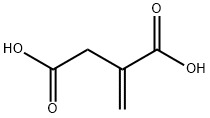
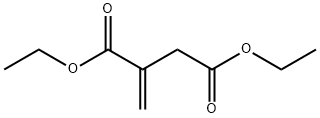

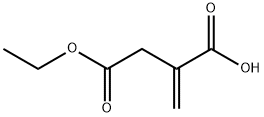

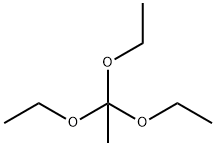

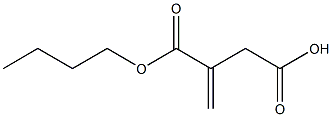
You may like
-
 Dimethyl itaconate CAS 617-52-7View Details
Dimethyl itaconate CAS 617-52-7View Details
617-52-7 -
 Dimethyl itaconate 98% CAS 617-52-7View Details
Dimethyl itaconate 98% CAS 617-52-7View Details
617-52-7 -
 Dimethyl Itaconate (stabilized with HQ) CAS 617-52-7View Details
Dimethyl Itaconate (stabilized with HQ) CAS 617-52-7View Details
617-52-7 -
 Dimethyl itaconate 98% (GC) CAS 617-52-7View Details
Dimethyl itaconate 98% (GC) CAS 617-52-7View Details
617-52-7 -
 Dimethyl itaconate CAS 617-52-7View Details
Dimethyl itaconate CAS 617-52-7View Details
617-52-7 -
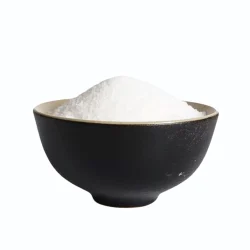 Dimethyl Itaconate PowderView Details
Dimethyl Itaconate PowderView Details
617-52-7 -
 Dimethyl Itaconate CAS 617-52-7View Details
Dimethyl Itaconate CAS 617-52-7View Details
617-52-7 -
 20677-73-0 (2,2-diethoxyethyl)methylamine 98%View Details
20677-73-0 (2,2-diethoxyethyl)methylamine 98%View Details
20677-73-0
